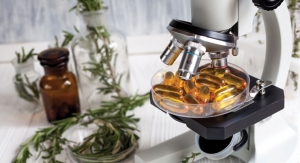By Gregory Stephens, Windrose Partners & Sanford Bigelow, PhD, DABT, Vanguard Global Associates LLC04.01.19
In this column, Windrose Partners LLC and Vanguard Global Associates LLC provide an overview of regulatory considerations for taking new products to market. More specifically, our goal herein is to provide product formulators and marketing personnel with a brief roadmap toward development of commercially viable products while achieving regulatory acceptance in
the marketplace.
Historically, the regulatory pathway to market for “nutraceutical” products has a been either as dietary supplements or fortification of conventional foods. To varying degrees this served the market well with the exception of nutritional products that offer disease management benefits. Both dietary supplements and conventional foods can make approved health claims and qualified health claims, but these are somewhat limiting and require a rigorous, often costly and time-consuming regulatory process within the FDA. A simpler way to make product claims is to use structure-function claims, which do not require FDA approval.
Additional regulatory pathways that have been less frequently utilized include Medical Foods and Foods for Special Dietary Use. Each afford their own unique regulatory requirements and allowed claims; however, neither requires FDA premarket approval. Still, some companies have chosen one of these routes without understanding the FDA requirements and statutory guidelines.
Regulatory Pathways for Nutritional Products
Is your product conventional food, a food for special dietary use, a dietary supplement, or perhaps a medical food? It depends largely on the composition and intended use. FCC (2019) lists identity and purity standards for many food and supplement ingredients. The following overview of the U.S. regulatory requirements for such products provides context in assessing composition and directions for use, product and ingredient safety, claims, regulatory status of the ingredients, and the intended use of the product.
The general categories of food products regulated by the FDA include: conventional food, dietary supplements, foods for special dietary use (e.g., foods intended for weight loss), and medical foods, as well as infant formulas. (From a regulatory perspective, the terms “functional foods” and “nutraceuticals” are marketing terms and are not classified as a regulatory category of food products.)
Conventional Foods. Many conventional foods that are common staples of the U.S. diet have food standards that establish minimum ingredient and nutrient content originally intended to support nutrient adequacy and reduce the likelihood of economic deception to consumers. These standards are codified under 21 Code of Federal Regulations (CFR) Parts 130-169.
Dietary Supplements. The Dietary Supplement Health and Education Act (DSHEA) of 1994 defined dietary supplements as articles or products intended to supplement the diet that bear or contain one or more specific ingredient. Dietary supplements can be viewed from a regulatory perspective as a subcategory of food. They are further defined as products not represented as a conventional food or as a sole item of a meal or the diet.
Dietary supplement products contain ingredients (i.e., dietary ingredients) which are divided into two categories: 1) new dietary ingredients (NDIs) and old dietary ingredients (ODIs). NDIs are supplement ingredients whose use occurred after Oct. 25, 1994, whereas ODIs were used before this date. Dietary supplement products are acceptable in the following forms: tablet, capsule, softgel, gelcap, or as a liquid (21 U.S.C. § 411(c)). Currently, as a point of differentiating foods from supplements and as currently practiced, a 2 fl. oz. shot is viewed as a supplement product whereas an 8 fl. oz. beverage is viewed as a conventional food.
Foods for Special Dietary Use. This category is drawing considerable interest from food and supplement marketers hoping to make more compelling product claims. Foods for special dietary use are defined as articles or products 1) used for supplying particular dietary needs which exist by reason of a physical, physiological, pathological or other condition, including but not limited to the conditions of diseases, convalescence, pregnancy, lactation, allergic hypersensitivity to food, underweight, and overweight; 2) used for supplying particular dietary needs which exist by reason of age, including but not limited to infancy and childhood; 3) used for supplementing or fortifying the ordinary or usual diet with any vitamin, mineral, or other dietary property, and are intended for persons who otherwise can consume a normal diet containing a normal range of nutrient intakes to meet their physiological needs.
Foods for special dietary use can be viewed as a regulatory antecedent to medical foods (as the first regulations for foods for special dietary use were promulgated in 1941), yet foods for special dietary use do not require use under the care of a healthcare practitioner. The intended use of foods for special dietary purposes includes intake for persons with allergies (i.e., the food is presented as hypo-allergenic) and for weight loss and maintenance. Both of these uses have been codified (21 CFR 105). Foods for special dietary use are generally intended for healthy people who otherwise have special dietary needs (e.g., Lactaid milk for people with lactose intolerance) as compared to medical foods, which are used for the dietary management of a disease or other health conditions.
Medical Foods. Medical foods are formulated to be consumed or administered enterally under the supervision of a physician or healthcare practitioner, and are intended for the specific dietary management of a disease or condition for which distinctive nutritional requirements—based on recognized scientific principles—are established by medical evaluation (21 U.S.C. § 360ee (b) (3)). Medical foods are the only regulatory category of food products that are intended for use by patients who are under the care of a healthcare practitioner.
Their intended use is for patients with a disease that has a distinctive nutritional requirement (a pathophysiological condition that requires dietary intake of specific nutrients that exceed the normal range associated with a normal diet); and their use is under the terms of specific dietary management of the disease. Distinctive nutritional requirements are an integral part of how medical foods are defined, as it is important to determine which diseases medical foods are suitable for. The FDA has yet to define distinctive nutritional requirements, yet the agency provided multiple interpretations in its 1996 ANPR.
Typical medical foods are enteral nutrition products (i.e., products provided through the gastrointestinal tract, taken by mouth, or provided through a nasogastric tube or catheter that delivers nutrients beyond the oral cavity or directly to the stomach).
In the preamble to the proposed rule to exempt medical foods from requirements under the Nutrition Labeling and Education Act (NLEA), the FDA (1991) recognized that some medical foods are available in the retail setting by stating “they are generally not available on the retail shelf.” FDA (1991, 2008a, 2011, 2013) recognized that medical foods are used by “patients receiving active and ongoing medical supervision (e.g., in a healthcare facility or as an outpatient) [emphasis added].” Medical foods are exempt from NLEA labeling requirements (FDA 1993) under 21 CFR 101.9(j)(8).
Key Regulatory Considerations
Safety. In addition to regulation of product claims, safety standards are critical. All food ingredients must be 1) approved by the FDA as a food additive or color additive, 2) be prior sanctioned by the FDA, or 3) be Generally Recognized As Safe (GRAS) either by the FDA or self-determined by a panel of experts qualified by training and experience (21 CFR 170). FDA has offered guidence on safety tests for determining product and ingredient safety (2007).
Types of Labeling Claims. The Federal Food, Drug, and Cosmetic Act (21 U.S.C. § 343), amended by the NLEA and DHSEA, allows for companies to make the following health-related claims in product labeling: 1) structure/function claims (FDA 2000, 2003b, 2008a, 2010); 2) health claims (e.g., soy protein and blood cholesterol— FDA 1998, 1999); 3) medical food claims; and 4) nutrient content claims.
Substantiating Product Claims. The U.S. Federal Trade Commission (FTC) and FDA work together to regulate the food, medical food, and supplement industry. For such products, the FTC regulates advertising and the FDA regulates labeling. Advertising is viewed as product representations made beyond those listed on labeling. In general, the overriding principle for substantiating claims is that the quantity and quality of the scientific evidence must match the nature and specificity of the claim.
Details on permissible product claims, their substantiation, and product safety requirements are beyond the scope of this article and will be addressed in more detail in the future.
Conclusions
The regulatory pathway to market for a nutraceutical product is not simple and it may entail significant risk. There are emerging options that product developers (i.e., formulators and marketing personnel) can take; each offers options to make compelling claims, communicating product benefits to consumers/patients and healthcare professionals. We strongly suggest marketers who are considering different regulatory pathways consult with qualified experts to minimize risks and help achieve commercial success.
Gregory Stephens
Windrose Partners
Greg Stephens, RD, is president of Windrose Partners, a company serving clients in the the dietary supplement, functional food and natural product industries. Formerly vice president of strategic consulting with The Natural Marketing Institute (NMI) and Vice President of Sales and Marketing for Nurture, Inc (OatVantage), he has 25 years of specialized expertise in the nutritional and pharmaceutical industries. His prior experience includes a progressive series of senior management positions with Abbott Nutrition (Ross Products Division of Abbott Laboratories), including development of global nutrition strategies for disease-specific growth platforms and business development for Abbott’s medical foods portfolio. He can be reached at 267-432-2696; E-mail: gregstephens@windrosepartners.com.
Sandy Bigelow
Vanguard Global Associates
Sandy Bigelow, PhD, DABT, is principal at Vanguard Global Associates LLC (VGA), a leading-edge consultancy of experienced associates who work together to develop creative solutions to their clients’ challenges. VGA helps clients deal with the safety and claims aspects of commercializing their ingredients and products. Bigelow is Board Certified in General Toxicology (DABT), qualifying a practice in safety assurance and evaluation.
References
Code of Federal Regulations, U.S. Government Printing Office, Washington, D.C., 20001.
FCC. 2019. Food Chemical Codex monographs. Online, and Ninth Edition, and Accompanying Supplements. U.S. Pharmacopeial Convention. Rockville, MD 20852.
FDA 1991. U.S. Food and Drug Administration. Nutrition Labeling and Education Act. Proposed Rule. 56 Federal Register 60366 (November 27, 1991).
FDA 1993. Nutrition Labeling and Education Act. Final Rule. 58 Federal Register 2079 (January 6, 1993).
FDA 1996. Regulation of Medical Foods. Advance Notice of Proposed Rulemaking. 21 Federal Register 60661 (November 29, 1996).
FDA 1998. Food Labeling: Health Claims; Soy Protein and Coronary Heart Disease. Proposed Rule. Federal Register 63:62977. November 10, 1998.
FDA 1999. Food Labeling: Health Claims; Soy Protein and Coronary Heart Disease. Final Rule. 21 Federal Register 57,700 (October 26, 1999).
FDA 2000. Regulations on Statements Made for Dietary Supplements Concerning the Effect of the Product on the Structure or Function of the Body. Final Rule. 65 Federal Register 1000, January 6, 2000.
FDA 2003. Claims That Can Be Made for Conventional Foods and Dietary Supplements. Guidance for Industry. Found at: http://www.fda.gov/Food/LabelingNutrition/LabelClaims/ucm111447.htm.
FDA 2007. U.S. Food and Drug Administration. FDA Redbook. Guidance for Industry and Other Stakeholders. Toxicological Principles for the Safety Assessment of Food Ingredients. http://www.fda.gov/Food/GuidanceComplianceRegulatoryInformation/GuidanceDocuments/FoodIngredientsandPackaging/Redbook/default.htm.
FDA 2008a. Medical Foods – Domestic and Import. FDA Compliance Program Guidance Manual. 7321.002. Completion date: September 30, 2008. pp. 30.
FDA 2008b. Substantiation for Dietary Supplement Claims Made Under Section 403(r) (6) of the Federal Food, Drug, and Cosmetic Act. Guidance for Industry. Found at: (http://www.fda.gov/Food/GuidanceComplianceRegulatoryInformation/GuidanceDocuments/DietarySupplements/ucm073200.htm).
FDA 2010. Structure/Function Claims for Dietary Supplements and Conventional Foods. Guidance for Industry. Found at: http://www.fda.gov/Food/LabelingNutrition/LabelClaims/StructureFunctionClaims/default.htm
FDA 2011. Guidance for Industry: Frequently Asked Questions About Medical Foods. May 1997, updated May 2007 and July 2011. Accessed May 2013 at: http://www.fda.gov/Food/GuidanceRegulation/GuidanceDocumentsRegulatoryInformation/MedicalFoods/ucm054048.htm.
FDA 2013. Draft Guidance for Industry: Frequently Asked Questions About Medical Foods; Second Edition, revised May 1997, revised May 2007, revised August 2013, pp.13.
FDA 2014. Food Allergens. http://www.fda.gov/Food/IngredientsPackagingLabeling/FoodAllergens/default.htm, accessed March 28, 2016.
FDA 2016a. Substances Generally Recognized As Safe. Final Rule. U.S. Food and Drug Administration. Federal Register 81:54,960. August 16, 2016.
FDA 2016b. Dietary Supplements: New Dietary Ingredient Notifications and Related Issues: Draft Guidance for Industry. August 2016, pp. 102.
FDA 2017a. Regulatory Framework for Substances Intended for Use in Human Food or Animal Food on the Basis of the Generally Recognized As Safe (GRAS) Provision of the Federal Food, Drug, and Cosmetic Act: Guidance for Industry. U.S. Food and Drug Administration. November 2017, pp. 28.
FDA 2017b. Best Practices for Convening a GRAS Panel: Guidance for Industry. Draft Guidance. U.S. Food and Drug Administration. November 2017, pp. 30.
Federal Register, U.S. Government Printing Office, Washington, D.C., 20001.
FTC 1994. Enforcement Policy Statement on Food Advertising, May 1994. Federal Trade Commission, Washington, DC.; 59 Federal Register 28388; June 1, 1994.
FTC 1998. Dietary Supplements: An Advertising Guide for Industry, Bureau of Consumer Protection, Federal Trade Commission, 26 pp.
FTC 2001. Dietary Supplements: An Advertising Guide for Industry, Bureau of Consumer Protection, Federal Trade Commission, pp. 32.
Suggs-Anderson, S. 2011. Regulation of Medical Foods. Shawne Suggs-Anderson, MMSc, RD. Infant Formula and Medical Foods Staff. ONLDS/CFSAN/FDA. NORD Medical Foods Conference. February 10, 2011. PowerPoint slide deck, pp. 22.
the marketplace.
Historically, the regulatory pathway to market for “nutraceutical” products has a been either as dietary supplements or fortification of conventional foods. To varying degrees this served the market well with the exception of nutritional products that offer disease management benefits. Both dietary supplements and conventional foods can make approved health claims and qualified health claims, but these are somewhat limiting and require a rigorous, often costly and time-consuming regulatory process within the FDA. A simpler way to make product claims is to use structure-function claims, which do not require FDA approval.
Additional regulatory pathways that have been less frequently utilized include Medical Foods and Foods for Special Dietary Use. Each afford their own unique regulatory requirements and allowed claims; however, neither requires FDA premarket approval. Still, some companies have chosen one of these routes without understanding the FDA requirements and statutory guidelines.
Regulatory Pathways for Nutritional Products
Is your product conventional food, a food for special dietary use, a dietary supplement, or perhaps a medical food? It depends largely on the composition and intended use. FCC (2019) lists identity and purity standards for many food and supplement ingredients. The following overview of the U.S. regulatory requirements for such products provides context in assessing composition and directions for use, product and ingredient safety, claims, regulatory status of the ingredients, and the intended use of the product.
The general categories of food products regulated by the FDA include: conventional food, dietary supplements, foods for special dietary use (e.g., foods intended for weight loss), and medical foods, as well as infant formulas. (From a regulatory perspective, the terms “functional foods” and “nutraceuticals” are marketing terms and are not classified as a regulatory category of food products.)
Conventional Foods. Many conventional foods that are common staples of the U.S. diet have food standards that establish minimum ingredient and nutrient content originally intended to support nutrient adequacy and reduce the likelihood of economic deception to consumers. These standards are codified under 21 Code of Federal Regulations (CFR) Parts 130-169.
Dietary Supplements. The Dietary Supplement Health and Education Act (DSHEA) of 1994 defined dietary supplements as articles or products intended to supplement the diet that bear or contain one or more specific ingredient. Dietary supplements can be viewed from a regulatory perspective as a subcategory of food. They are further defined as products not represented as a conventional food or as a sole item of a meal or the diet.
Dietary supplement products contain ingredients (i.e., dietary ingredients) which are divided into two categories: 1) new dietary ingredients (NDIs) and old dietary ingredients (ODIs). NDIs are supplement ingredients whose use occurred after Oct. 25, 1994, whereas ODIs were used before this date. Dietary supplement products are acceptable in the following forms: tablet, capsule, softgel, gelcap, or as a liquid (21 U.S.C. § 411(c)). Currently, as a point of differentiating foods from supplements and as currently practiced, a 2 fl. oz. shot is viewed as a supplement product whereas an 8 fl. oz. beverage is viewed as a conventional food.
Foods for Special Dietary Use. This category is drawing considerable interest from food and supplement marketers hoping to make more compelling product claims. Foods for special dietary use are defined as articles or products 1) used for supplying particular dietary needs which exist by reason of a physical, physiological, pathological or other condition, including but not limited to the conditions of diseases, convalescence, pregnancy, lactation, allergic hypersensitivity to food, underweight, and overweight; 2) used for supplying particular dietary needs which exist by reason of age, including but not limited to infancy and childhood; 3) used for supplementing or fortifying the ordinary or usual diet with any vitamin, mineral, or other dietary property, and are intended for persons who otherwise can consume a normal diet containing a normal range of nutrient intakes to meet their physiological needs.
Foods for special dietary use can be viewed as a regulatory antecedent to medical foods (as the first regulations for foods for special dietary use were promulgated in 1941), yet foods for special dietary use do not require use under the care of a healthcare practitioner. The intended use of foods for special dietary purposes includes intake for persons with allergies (i.e., the food is presented as hypo-allergenic) and for weight loss and maintenance. Both of these uses have been codified (21 CFR 105). Foods for special dietary use are generally intended for healthy people who otherwise have special dietary needs (e.g., Lactaid milk for people with lactose intolerance) as compared to medical foods, which are used for the dietary management of a disease or other health conditions.
Medical Foods. Medical foods are formulated to be consumed or administered enterally under the supervision of a physician or healthcare practitioner, and are intended for the specific dietary management of a disease or condition for which distinctive nutritional requirements—based on recognized scientific principles—are established by medical evaluation (21 U.S.C. § 360ee (b) (3)). Medical foods are the only regulatory category of food products that are intended for use by patients who are under the care of a healthcare practitioner.
Their intended use is for patients with a disease that has a distinctive nutritional requirement (a pathophysiological condition that requires dietary intake of specific nutrients that exceed the normal range associated with a normal diet); and their use is under the terms of specific dietary management of the disease. Distinctive nutritional requirements are an integral part of how medical foods are defined, as it is important to determine which diseases medical foods are suitable for. The FDA has yet to define distinctive nutritional requirements, yet the agency provided multiple interpretations in its 1996 ANPR.
Typical medical foods are enteral nutrition products (i.e., products provided through the gastrointestinal tract, taken by mouth, or provided through a nasogastric tube or catheter that delivers nutrients beyond the oral cavity or directly to the stomach).
In the preamble to the proposed rule to exempt medical foods from requirements under the Nutrition Labeling and Education Act (NLEA), the FDA (1991) recognized that some medical foods are available in the retail setting by stating “they are generally not available on the retail shelf.” FDA (1991, 2008a, 2011, 2013) recognized that medical foods are used by “patients receiving active and ongoing medical supervision (e.g., in a healthcare facility or as an outpatient) [emphasis added].” Medical foods are exempt from NLEA labeling requirements (FDA 1993) under 21 CFR 101.9(j)(8).
Key Regulatory Considerations
Safety. In addition to regulation of product claims, safety standards are critical. All food ingredients must be 1) approved by the FDA as a food additive or color additive, 2) be prior sanctioned by the FDA, or 3) be Generally Recognized As Safe (GRAS) either by the FDA or self-determined by a panel of experts qualified by training and experience (21 CFR 170). FDA has offered guidence on safety tests for determining product and ingredient safety (2007).
Types of Labeling Claims. The Federal Food, Drug, and Cosmetic Act (21 U.S.C. § 343), amended by the NLEA and DHSEA, allows for companies to make the following health-related claims in product labeling: 1) structure/function claims (FDA 2000, 2003b, 2008a, 2010); 2) health claims (e.g., soy protein and blood cholesterol— FDA 1998, 1999); 3) medical food claims; and 4) nutrient content claims.
Substantiating Product Claims. The U.S. Federal Trade Commission (FTC) and FDA work together to regulate the food, medical food, and supplement industry. For such products, the FTC regulates advertising and the FDA regulates labeling. Advertising is viewed as product representations made beyond those listed on labeling. In general, the overriding principle for substantiating claims is that the quantity and quality of the scientific evidence must match the nature and specificity of the claim.
Details on permissible product claims, their substantiation, and product safety requirements are beyond the scope of this article and will be addressed in more detail in the future.
Conclusions
The regulatory pathway to market for a nutraceutical product is not simple and it may entail significant risk. There are emerging options that product developers (i.e., formulators and marketing personnel) can take; each offers options to make compelling claims, communicating product benefits to consumers/patients and healthcare professionals. We strongly suggest marketers who are considering different regulatory pathways consult with qualified experts to minimize risks and help achieve commercial success.
Gregory Stephens
Windrose Partners
Greg Stephens, RD, is president of Windrose Partners, a company serving clients in the the dietary supplement, functional food and natural product industries. Formerly vice president of strategic consulting with The Natural Marketing Institute (NMI) and Vice President of Sales and Marketing for Nurture, Inc (OatVantage), he has 25 years of specialized expertise in the nutritional and pharmaceutical industries. His prior experience includes a progressive series of senior management positions with Abbott Nutrition (Ross Products Division of Abbott Laboratories), including development of global nutrition strategies for disease-specific growth platforms and business development for Abbott’s medical foods portfolio. He can be reached at 267-432-2696; E-mail: gregstephens@windrosepartners.com.
Sandy Bigelow
Vanguard Global Associates
Sandy Bigelow, PhD, DABT, is principal at Vanguard Global Associates LLC (VGA), a leading-edge consultancy of experienced associates who work together to develop creative solutions to their clients’ challenges. VGA helps clients deal with the safety and claims aspects of commercializing their ingredients and products. Bigelow is Board Certified in General Toxicology (DABT), qualifying a practice in safety assurance and evaluation.
References
Code of Federal Regulations, U.S. Government Printing Office, Washington, D.C., 20001.
FCC. 2019. Food Chemical Codex monographs. Online, and Ninth Edition, and Accompanying Supplements. U.S. Pharmacopeial Convention. Rockville, MD 20852.
FDA 1991. U.S. Food and Drug Administration. Nutrition Labeling and Education Act. Proposed Rule. 56 Federal Register 60366 (November 27, 1991).
FDA 1993. Nutrition Labeling and Education Act. Final Rule. 58 Federal Register 2079 (January 6, 1993).
FDA 1996. Regulation of Medical Foods. Advance Notice of Proposed Rulemaking. 21 Federal Register 60661 (November 29, 1996).
FDA 1998. Food Labeling: Health Claims; Soy Protein and Coronary Heart Disease. Proposed Rule. Federal Register 63:62977. November 10, 1998.
FDA 1999. Food Labeling: Health Claims; Soy Protein and Coronary Heart Disease. Final Rule. 21 Federal Register 57,700 (October 26, 1999).
FDA 2000. Regulations on Statements Made for Dietary Supplements Concerning the Effect of the Product on the Structure or Function of the Body. Final Rule. 65 Federal Register 1000, January 6, 2000.
FDA 2003. Claims That Can Be Made for Conventional Foods and Dietary Supplements. Guidance for Industry. Found at: http://www.fda.gov/Food/LabelingNutrition/LabelClaims/ucm111447.htm.
FDA 2007. U.S. Food and Drug Administration. FDA Redbook. Guidance for Industry and Other Stakeholders. Toxicological Principles for the Safety Assessment of Food Ingredients. http://www.fda.gov/Food/GuidanceComplianceRegulatoryInformation/GuidanceDocuments/FoodIngredientsandPackaging/Redbook/default.htm.
FDA 2008a. Medical Foods – Domestic and Import. FDA Compliance Program Guidance Manual. 7321.002. Completion date: September 30, 2008. pp. 30.
FDA 2008b. Substantiation for Dietary Supplement Claims Made Under Section 403(r) (6) of the Federal Food, Drug, and Cosmetic Act. Guidance for Industry. Found at: (http://www.fda.gov/Food/GuidanceComplianceRegulatoryInformation/GuidanceDocuments/DietarySupplements/ucm073200.htm).
FDA 2010. Structure/Function Claims for Dietary Supplements and Conventional Foods. Guidance for Industry. Found at: http://www.fda.gov/Food/LabelingNutrition/LabelClaims/StructureFunctionClaims/default.htm
FDA 2011. Guidance for Industry: Frequently Asked Questions About Medical Foods. May 1997, updated May 2007 and July 2011. Accessed May 2013 at: http://www.fda.gov/Food/GuidanceRegulation/GuidanceDocumentsRegulatoryInformation/MedicalFoods/ucm054048.htm.
FDA 2013. Draft Guidance for Industry: Frequently Asked Questions About Medical Foods; Second Edition, revised May 1997, revised May 2007, revised August 2013, pp.13.
FDA 2014. Food Allergens. http://www.fda.gov/Food/IngredientsPackagingLabeling/FoodAllergens/default.htm, accessed March 28, 2016.
FDA 2016a. Substances Generally Recognized As Safe. Final Rule. U.S. Food and Drug Administration. Federal Register 81:54,960. August 16, 2016.
FDA 2016b. Dietary Supplements: New Dietary Ingredient Notifications and Related Issues: Draft Guidance for Industry. August 2016, pp. 102.
FDA 2017a. Regulatory Framework for Substances Intended for Use in Human Food or Animal Food on the Basis of the Generally Recognized As Safe (GRAS) Provision of the Federal Food, Drug, and Cosmetic Act: Guidance for Industry. U.S. Food and Drug Administration. November 2017, pp. 28.
FDA 2017b. Best Practices for Convening a GRAS Panel: Guidance for Industry. Draft Guidance. U.S. Food and Drug Administration. November 2017, pp. 30.
Federal Register, U.S. Government Printing Office, Washington, D.C., 20001.
FTC 1994. Enforcement Policy Statement on Food Advertising, May 1994. Federal Trade Commission, Washington, DC.; 59 Federal Register 28388; June 1, 1994.
FTC 1998. Dietary Supplements: An Advertising Guide for Industry, Bureau of Consumer Protection, Federal Trade Commission, 26 pp.
FTC 2001. Dietary Supplements: An Advertising Guide for Industry, Bureau of Consumer Protection, Federal Trade Commission, pp. 32.
Suggs-Anderson, S. 2011. Regulation of Medical Foods. Shawne Suggs-Anderson, MMSc, RD. Infant Formula and Medical Foods Staff. ONLDS/CFSAN/FDA. NORD Medical Foods Conference. February 10, 2011. PowerPoint slide deck, pp. 22.






















